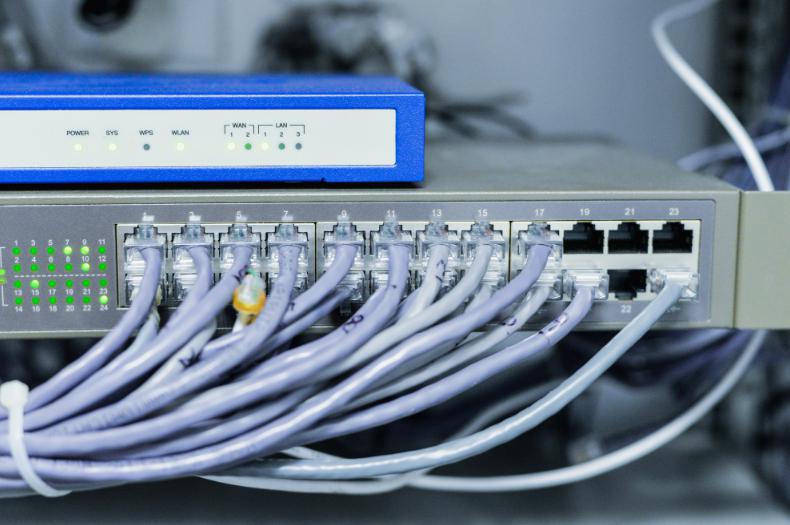Using Network Testing Tools to Diagnose Network Issues

20-09-22 |
by John, Junior QA
Maintaining a reliable network is essential for any business to ensure its operations run smoothly. But when issues arise, it can be difficult to identify the source of the problem. Network testing tools can be a valuable asset in diagnosing network issues quickly and accurately.
Network testing tools can help IT professionals diagnose a variety of network-related issues, including latency, packet loss, and incorrect configuration. They can provide valuable insight into the performance and reliability of the network, alerting administrators to potential problems before they cause major outages or downtime. By using network testing tools, IT professionals can quickly identify and resolve network issues before they become serious problems.
Network testing tools typically include a variety of features and capabilities. Some tools are capable of checking for latency and packet loss, while others can perform more advanced tests such as checking for incorrect configurations or packet fragmentation. In addition, some tools allow administrators to graphically view the results of their tests, giving them a better understanding of the network's performance.
In addition to being used to diagnose network issues, network testing tools can also be used to monitor the health of the network. This allows administrators to keep track of any changes in the network's performance and proactively address any potential problems before they become serious issues.
Using network testing tools is an important part of keeping a network running smoothly. By utilizing these tools, IT professionals can quickly diagnose and resolve any network-related issues, ensuring that their operations remain running without interruption.
Choosing the Right Network Testing Tool for Your Needs
Network testing tools are essential for diagnosing and troubleshooting network issues. With so many different types of network testing tools available, it can be difficult to know which one is right for your specific needs. In this blog post, we’ll explore the different types of network testing tools and provide tips on choosing the right one for your needs.
The first type of network testing tool is a packet analyzer, also known as a packet sniffer. This type of tool captures and analyzes data packets that are sent over a network. It can be used to troubleshoot performance issues, detect malicious activity, and monitor network traffic. When selecting a packet analyzer, you should consider the type of network you are using (wired or wireless), the speed of your network, and the protocols you are using.
The second type of network testing tool is a network security scanner. This type of tool is used to identify vulnerabilities in your network infrastructure and can help you keep your system secure from potential threats. When selecting a security scanner, you should consider the type of operating system you are using, the size and complexity of your network, and any existing security protocols you have in place.
The third type of network testing tool is a bandwidth monitor. This type of tool helps you measure the amount of bandwidth being used on your network. It can be used to identify bottlenecks and other performance issues that can affect your network’s overall speed and performance. When selecting a bandwidth monitor, you should consider the type of devices you are using, the size of your network, and the amount of traffic you typically experience.
Finally, the fourth type of network testing tool is a network protocol analyzer. This type of tool helps you analyze the communication between two devices on a network. It can be used to troubleshoot performance issues, detect security flaws, and monitor traffic flow. When selecting a protocol analyzer, you should consider the types of protocols you are using, the size of your network, and the types of traffic you typically experience.
Choosing the right network testing tool for your needs can be a daunting task, but it is an important step in ensuring the success of your network. Consider the type of network you are using, the protocols you are using, the size and complexity of your network, and any existing security protocols you have in place. With the right tool in hand, you can be sure that your network is running smoothly and efficiently.
A Guide to Understanding Network Performance Metrics
Network performance metrics are key to understanding the performance of your network and diagnosing any issues that may arise. By understanding the different types of performance metrics, you can better identify areas of improvement and take steps to ensure optimal network performance.
When evaluating network performance metrics, there are four main categories to consider: latency, bandwidth, throughput, and packet loss. Latency is the amount of time it takes for a packet to travel from one point on the network to another. Bandwidth measures the capacity of the connection between two points, while throughput measures the actual rate at which data is transferred. Finally, packet loss is the number of packets that are dropped during transmission due to errors or congestion.
In addition to these basic metrics, there are several other network performance metrics that can be used to gain more insight into the health of your network. These include jitter, which measures how much variance there is in latency, and packet reordering, which measures how often packets are sent out of order. Other metrics include packet loss ratio, number of retransmissions, round-trip time, and average hop count.
By understanding how to interpret these various metrics, you can begin to troubleshoot any issues that you may be experiencing with your network. For instance, if you notice unusually high latency or packet loss, you can use this information to identify the source of the issue and take steps to correct it. Similarly, if you find that your bandwidth is consistently low, you can use this data to determine whether you need to upgrade your connection or make other adjustments to improve your network performance.
Network performance metrics are essential for maintaining optimal network performance. By understanding the different types of metrics, you can better diagnose and troubleshoot any issues that may arise and take steps to ensure optimal network performance.





